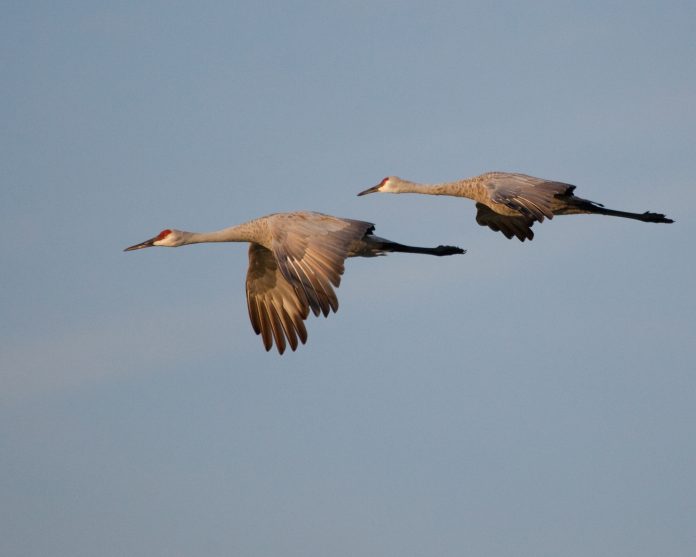
COLUMBUS, — A volunteer-driven sandhill crane count is attempting to locate breeding birds in Ohio, April 9, from 6:30 to 8:30 a.m., according to the Ohio Department of Natural Resources Division of Wildlife.
This project is part of the Midwest Crane Count and is coordinated by the Division of Wildlife, International Crane Foundation and Ohio Bird Conservation Initiative.
The sandhill crane is listed as threatened in Ohio, but their population has been increasing in recent years. Sandhills can be quite secretive during their nesting season, and the count is an effort to better track Ohio’s breeding crane population.
This year’s count will occur in the counties of Ashland, Columbiana, Delaware, Erie, Franklin, Fulton, Geauga, Hardin, Holmes, Knox, Logan, Lucas, Marion, Ottawa, Pickaway, Richland, Sandusky, Summit, Trumbull, Wayne, Wyandot and Williams.
Sandhill cranes typically breed near wetland areas such as wet meadows, shallow marshes, and bogs.
If you are interested in volunteering, contact a county coordinator. The time commitment includes the time it takes to scout an area, a virtual training and the morning count. Birders of all abilities who can identify a sandhill crane can participate. A vehicle is also required.
Participation in pairs and some experience using eBird is preferred.
In 2021, a pilot survey was conducted in Geauga, Holmes, Summit, Trumbull and Wayne counties. The effort documented 160 sandhill cranes in those five counties.
Ohio’s cranes are seasonal residents. They feed during daylight hours on grain, insects, birds, small mammals, amphibians and reptiles. They migrate at high elevations in large flocks, often composed of thousands of birds.
The range of these native birds extends from Mexico and Florida into Alaska and Canada, depending on the season.









